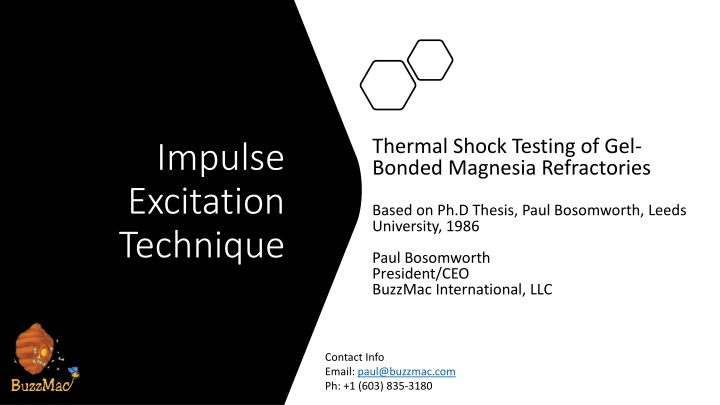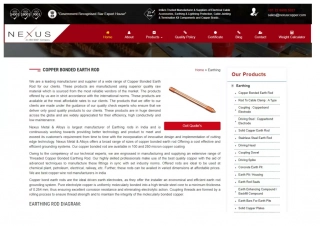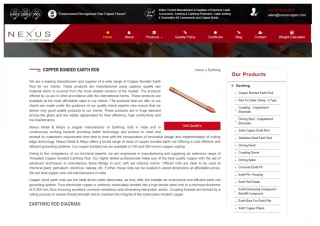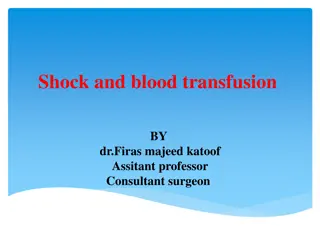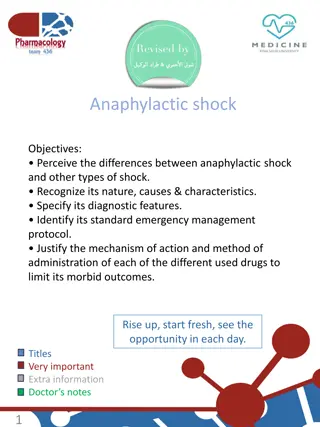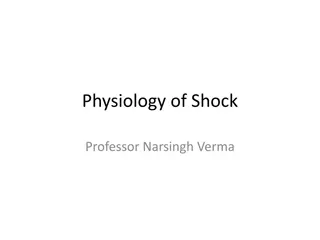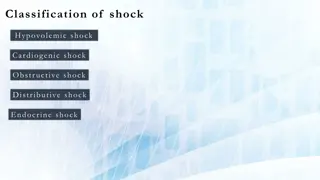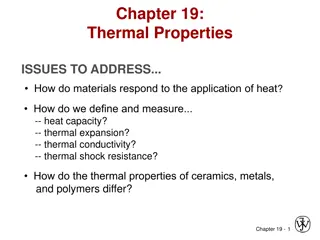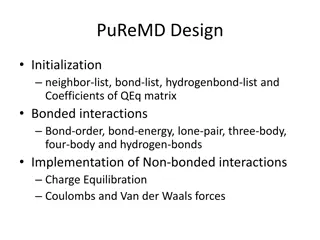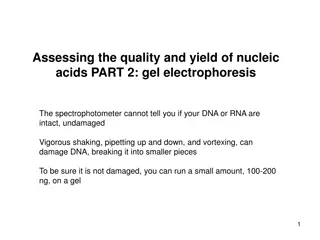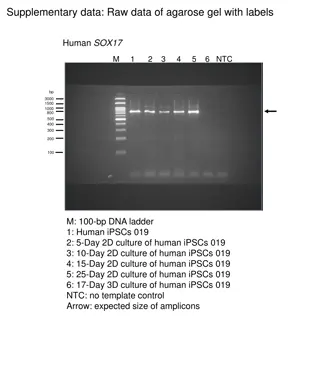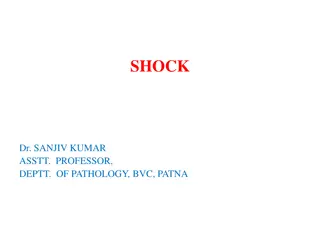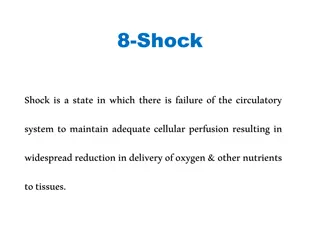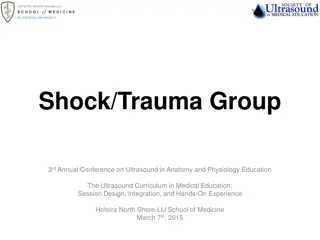Thermal Shock Testing of Gel-Bonded Magnesia Refractories
Study conducted by Paul Bosomworth at Leeds University in 1986 aimed to reduce mechanical damage after thermal shock in magnesia refractories used in sliding gates. The research focused on using gel-binders and achieving optimum grain packing to enhance thermal stress damage resistance. The study also involved impulse excitation technique to measure Young's modulus and relate it to thermal stress damage resistance with different binders. Gel-bonded refractories labeled EA1-EA4 and TA2 showed varying results compared to traditional pressed brick PA2 known for good damage resistance.
Download Presentation

Please find below an Image/Link to download the presentation.
The content on the website is provided AS IS for your information and personal use only. It may not be sold, licensed, or shared on other websites without obtaining consent from the author.If you encounter any issues during the download, it is possible that the publisher has removed the file from their server.
You are allowed to download the files provided on this website for personal or commercial use, subject to the condition that they are used lawfully. All files are the property of their respective owners.
The content on the website is provided AS IS for your information and personal use only. It may not be sold, licensed, or shared on other websites without obtaining consent from the author.
E N D
Presentation Transcript
Thermal Shock Testing of Gel- Bonded Magnesia Refractories Impulse Excitation Technique Based on Ph.D Thesis, Paul Bosomworth, Leeds University, 1986 Paul Bosomworth President/CEO BuzzMac International, LLC Contact Info Email: paul@buzzmac.com Ph: +1 (603) 835-3180
Impulse Excitation Technique (IET)* TAP BRICK MEASURE VIBRATIONS RECORD & ANALYSE (damping/elastic properties) *also known as ping test, resonant vibration, impact acoustic resonance, eigen frequency method
Introduction The purpose of this study was to reduce the extent of mechanical damage after thermal shock in a series of magnesia refractories (used as inner nozzles materials in sliding gates). The damage was reduced in two main ways: 1. Using gel-binders to increase the number density of uniform cracks 2. Using optimum grain packing Increasing the crack density can be expected to increase the thermal stress damage resistance based on some theories by Hassleman1,2. Rigby3 demonstrated that gel-binders, such as ethyl silicate, create a network of cracks because of the shrinkage of the gel as it converts to silica. Carswell4 showed that the damage resistance could be increased by using fine pore size distributions. Thus, the granulometry of the refractories were based on an optimum packing formula by Andreasen and Anderson5 as follows: 1. 2. D. P. H. Hassleman, J. Am. Ceram. Soc. 52 [11], 600-604 (1969) D. P. H. Hasselman, Ceramics in Severe Environments, pp 89-103, Ed, Q. W. Kriegel and H. Palmour III (1971) A. J. Rigby, H. G. Emblem, and E. W. Roberts, Trans. & J. Brit. Ceram. Soc. 78, 9-11 (1979) G. P. Carswell, Trans. Brit. Ceram. Soc. 74 [2], 41-47 (1975) A. H. M. Andreasen and J. Andersen, " ber die Beziehungzwischen Kornabstufung und Zwischenraum in Produktenauslosen K rnern (miteinigen Experimenten)," Colloid Polym. Sci., vol. 50, pp. 217 228, 1930. Where: 3. 4. 5. Y = weight percent of powder passing through a sieve of aperture size d D = largest grain in the system (~4.8 mm) q = experimentally determined index giving the optimum packing (0.25-0.45 here)
Gel-binders and Granulometry A series of gel-bonded, seawater magnesia refractories were water quenched through temperature differences T. The Young s modulus (E) was measured afterwards, using a resonant frequency method similar to IET. This Young s modulus was then used to better quantify the thermal stress damage resistance, thereby allowing the damage resistance to be related to the granulometry and type of binder. The gel-binders were either ethyl silicate or tetraisopropyl titanate1. The refractories were labeled as follows: 1. EA1-EA4: gel binder = ethyl silicate 2. TA2: gel binder = tetraisoproplyl titanate 3. PA2: no gel binder = traditional pressed brick Note: PA2, a traditional pressed brick, was included as this was known to have good thermal stress damage resistance. The resulting weight fraction of fine grains used (fines) and the mean pore size (water-expulsion method2) in the fired refractories for a given Andreasen index (q) are shown below 1. Paul Anthony Bosomworth, Anup Kumar Das, Harold Garton Emblem, Kenneth Jones, Edward Wilford Roberts, Titanate based gel, UK Pat. 2 111 042 A J. F. Clements and J. Vyse, Trans. Brit. Ceram. Soc 67 [7], 285-317 (1968) 2.
Results The retained Young s modulus (E) as measured by IET vs the water quenching temperature ( T) are shown below. Note: R st and Tf are thermal stress damage resistance parameters derived from a modified Hasselman 2D model. The curves represent the best fits to this model. For more details, contact me on linkedin.com/in/paul-bosomworth-78151514
Discussion of Results The thermal stress damage resistance, quantified by Tf*, correlated highly with the mean pore size, fines fraction, and Andreasen index (q); as shown below. A disadvantage of using ethyl silicate is that the silica residue reacts with the CaO impurities in the sweater magnesia, forming significant liquid phase during sintering. This causes the fines to agglomerate slightly. The titanate gel-binder forms much less second phase, and so TA2 had much finer pores than the ethyl silicate bonded refractory with the same granulometry (EA2). Thus, TA2 had a slightly higher thermal stress damage resistance. The pressed brick had the highest thermal stress damage resistance because of its smaller mean pore size. However, PA2 had much lower strength than the ethyl silicate bonded refractory of the same granulometry (EA2): 8.8 GPa vs 26.4 GPa. So, TA2 and EA1 had the best combination of properties for the intended purpose (sliding gate nozzle). * The theoretical quenching temperature to cause complete failure. For more details, contact me on linkedin.com/in/paul-bosomworth-78151514
Conclusions and Comments IET can be used over a variety of testing environments (high/low temperatures, humidity ) IET is ideally suited for measuring the thermal stress damage resistance of refractories IET is fast, efficient and relatively low cost compared to destructive mechanical testing IET is suited to R&D, QC/QA Any question or comments, please contact me on linkedin.com/in/paul-bosomworth-78151514
